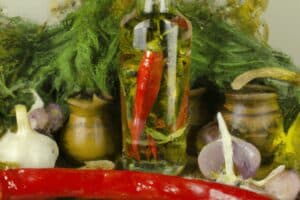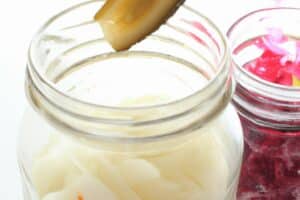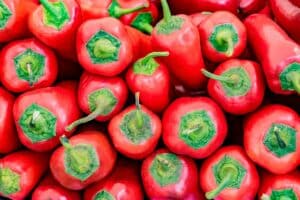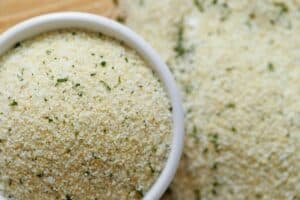Sometimes, a recipe calls for an ingredient we think we have in the kitchen, only for us to be completely out when we’re halfway through making the darn thing! When that happens, it’s good to be able to make a quick swap for an easy alternative.
However, what is a good escarole substitute? Let’s find out!
What Is Escarole?
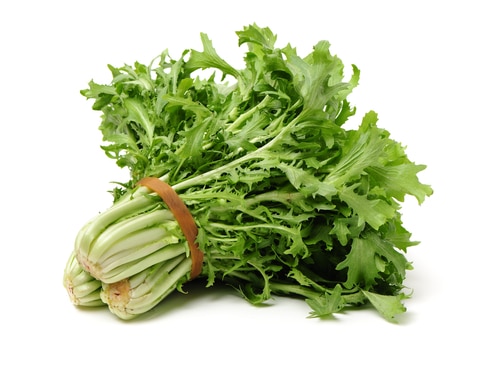
Escarole is a Bavarian and Batavian (though some say it’s native to Sicily) endive that contains curly, broad green leaves. It provides a peppery, bitter flavor when used in a variety of recipes. Its leaves on the outer edges come in a darker color and have a more bitter taste. The interior leaves are typically more tender in texture.
The escarole chicory is bunched up and positioned with fresh lettuce heads. Compared to lettuce, escarole is slightly more costly and viewed as a specialty food item. Escarole does not demand much preparation before using it in meals because it only needs a quick rinse.
You can utilize escarole in many different forms, both cooked and raw. One of the more popular applications for escarole is Italian wedding soup. Many chefs pair escarole with white beans, whether as a soup or a tasty side option with ham or bacon. Escarole, or an escarole substitute, can be grilled or sauteed or kept raw for salad greens.
Escarole also delivers valuable nutritional benefits. It contains more minerals and vitamins per ounce than iceberg lettuce. In addition to its low-calorie content, escarole has healthy amounts of fiber, vitamin A, iron, vitamin C, and calcium. One serving of escarole typically has 15 calories, 1 gram of protein, 3 grams of carbs, and 35% of vitamin A daily value.
Top 5 Escarole Substitutes
There are many tasty substitutes for escarole. The options below are delicious raw or cooked, and they each add a different type of flavor to your home cuisine.
1. Arugula
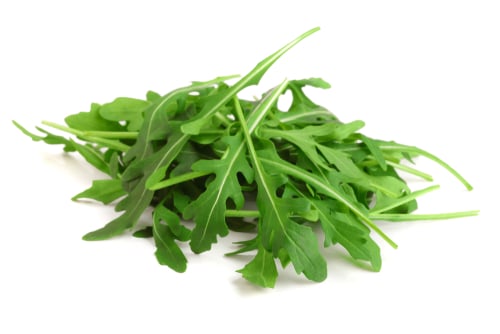
Arugula is a reliable substitute for escarole that comes from the mustard green and cabbage family. It provides a peppery test and is a popular choice for spring salad recipes. This green is available all year round, but its best season for availability is in the fall and spring. Although it is more expensive than lettuce, it is still affordable and easy to prepare.
You can typically buy arugula in bunches, although it can catch sand and dirt. To properly prepare, you should give the arugula a solid rinse and cut the root ends if needed.
You can enjoy arugula either cooked or uncooked. The green is commonly served in salads as a raw leaf. Its peppery taste combines perfectly with potent flavors like citrus, cheeses, and others. Arugula also adds a nice flavor to pesto and cooked pizzas. It mixes well with sandwiches, but many cooks will utilize it for lasagnas, crostini dishes, pesto dishes, stir-fries, and vegetable sautés.
Much like escarole, arugula is excellent for soups, pasta, and other side dishes. Arugula’s taste is spicy, tart, and peppery. Its fresh green flavor makes it an ideal option for salad mixes. The tender leaves come with a strong stem, a lot like spinach. You can typically find arugula in the early summer at farmer’s markets, but it is available throughout the year at various supermarkets.
2. Kale
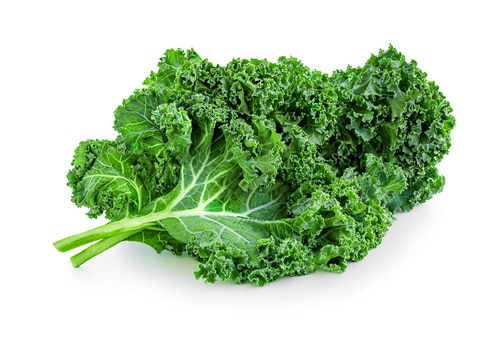
Kale is a leafy, dark green vegetable that belongs to the cabbage and mustard family. Not only can it remain fresh through colder temperatures, but it is also simple and straightforward to grow. It serves as a viable escarole replacement because of its numerous health benefits and hardy characteristics. Once a staple in niche health food stores, it is now a popular diet option in mainstream supermarkets.
Kale’s stalks have long, loose leaves instead of rounded, packed heads. When searching for kale at the store, you will most likely see it as curly or baby kale. Baby kale has tender leaves and typically works well in salads. Curly kale is more fibrous and provides better use when cooked. Kale not only delivers vibrant texture and color to dishes, but it also has excellent nutritional value.
Whether you prepare kale cooked or raw, it would be best to cut the stems before consuming the greens. After you rinse the kale, you can remove the stems with a paring knife. Raw kale typically gets cut and mixed into salads. A dressing with an oil base will dampen kale’s durable leaves. You can also effectively prepare kale through baking, boiling, sautéing, or stir-frying.
Kale works well with stews and soups because its durable leaves keep their shape through the boiling process. It will also retain its sturdy texture instead of mushing up. If you want to use kale as a tasty side dish, you can sauté it with salt, pepper, or garlic until it wilts.
3. Spinach
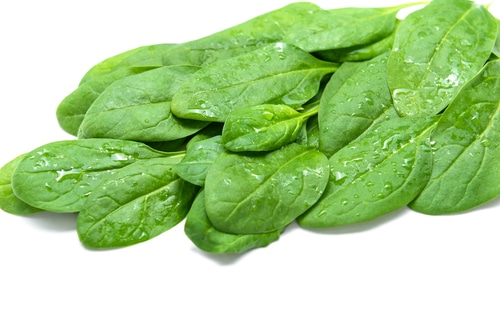
Spinach is another leafy escarole alternative that can be consumed raw or cooked. It is present on a variety of restaurant menus and recipes. You can usually purchase spinach as an entire leaf, including bigger leaves with thick stems. It also comes in spring spinach, baby spinach, and other forms for raw purposes. It gets sold in a bag and is already cleaned.
Spinach is a vegetable that integrates well with all types of savory or sweet meals, whether it is cooked or raw. This affordable, healthy ingredient goes well with stir-fries, soups, and cuisines. Many smoothie fanatics will add it as a nutritional component to their daily blends. Its strong flavor can showcase itself well when mixed with other flavorful ingredients.
If you incorporate spinach into your lunch or dinner, it combines well with fatty, rich foods like butter, cheese, cream, and bacon. Spinach is also a popular choice for quiche, pasta dishes, and omelets. Many cooks and chefs will mix it in with well-known sauces like palak paneer and pesto. For party favors and appetizers, spinach is the perfect ingredient for spinach and artichoke dip.
When it comes to raw spinach, it is an ideal additive for salads. To get the most out of its taste, you add in bold dressing options like ranch or blue cheese. Spinach salads are also extra tasty with pecans, cheese chunks, roasted beets, sunflower seeds, and various dried fruits.
4. Mustard Greens
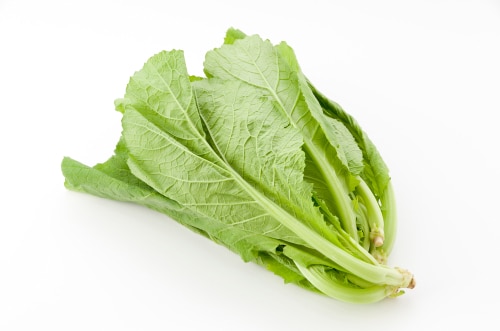
Mustard greens serve as an effective substitution for escarole. You can prepare them just as you would with spinach, but they provide a more potent flavor. You can eat them raw or cooked by sautéing, steaming, or simmering the greens.
Mustard greens’ bitter, peppery taste is like escarole. These greens even retain their bite when you cook them. You can eat both the stalks and leaves of mustard greens, although both will provide a pungent flavor. Mustard greens are best when eaten raw or cooked when tender and young. The optimal time to purchase mustard greens is between the middle of winter and spring.
The best way to prepare mustard greens includes washing them in lukewarm water, which removes dirt and sand. You should also remove and dispose of the stems by folding the leaves and ripping them off.
When it comes to the best mustard green serving suggestions, they go well as an additive to a traditional green salad. Younger, tender mustard green leaves mix well with other similar greens. Vinegar- and olive oil-based dressings pair well with the greens.
Cooked mustard greens are an excellent ingredient when mixed with pureed legumes or mashed potatoes. A pair of larger mustard green bunches should be able to replenish four people as a side dish. It would also be wise not to cook mustard greens in iron or aluminum pots. When they encounter these types of metals, the mustard greens might turn black.
5. Chard
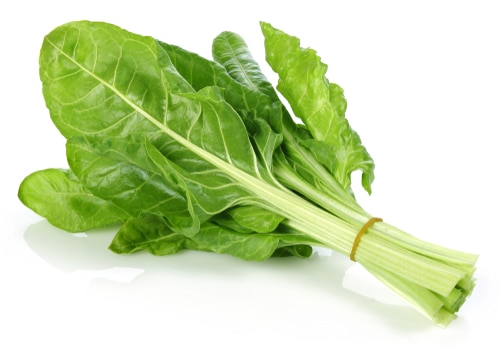
Chard, also known as swiss chard, is an escarole replacement and leafy vegetable strongly associated with spinach and beets. It contains high amounts of vitamins C, A, and K, including healthy sources of iron, potassium, and magnesium. Chard always comes with green leaves, but the stalks could be any color. Rainbow chard has traces and stalks of pink, red, yellow, white, and orange.
Whether it is sauteed or steamed, chard is a quality ingredient for casseroles, stews, quiches, and frittatas. Its raw, younger leaves make for a tasty salad. This green is a staple in the Mediterranean, Turkish and Egyptian cuisines. If you cook chard stems, they will take longer than the leaves. However, the entire plant is delicious and edible.
As you look for chard at the stores, it is smart to watch for stems that are colorful and firm. You should also look for leaves that are smooth and glossy without yellow or brown spots. The best way to store your chard is in wet paper towels within a cracked plastic bag. For best results, chard should get used within two to three days of purchase.
Final Wrap Up
Finding the perfect escarole substitute can be a challenge, but each of the options on our list provides a tasty alternative. However, arugula, kale, spinach, mustard greens, and chard are all nearly identical to escarole. Each option has unique health benefits and can elevate the quality of your salad, soups, and other hot meals.
Regardless of which escarole substitute you decide, you should always keep your greens fresh in the long run. Take the necessary steps to wash them thoroughly and store them in optimal temperatures and conditions. Proper preparation can make these greens taste delicious for breakfast, lunch, or dinner.


